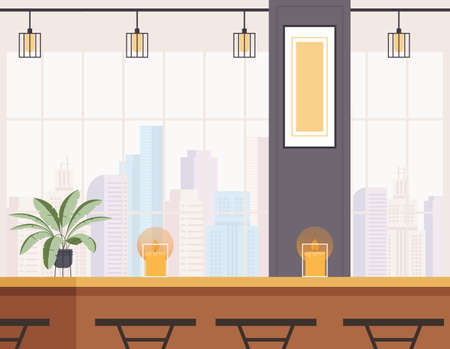Embracing the British Sense of Space
The British approach to living room design is deeply rooted in a sense of symmetry and balance, where every element works harmoniously to create a cohesive and timeless atmosphere. Whether nestled in a classic Georgian terrace or a sleek contemporary flat, UK homes consistently reflect an appreciation for both function and heritage in their layouts. British interiors often celebrate the original architecture—such as ornate cornicing or period fireplaces—while arranging furnishings in a way that enhances these features. In modern settings, this means careful placement of sofas and armchairs to encourage conversation and maximise natural light, without disrupting the flow of the space. The result is a living room that feels inviting yet orderly, blending comfort with enduring style. Ultimately, embracing symmetry and balance in British living rooms is about honouring tradition whilst allowing for practical daily use, ensuring the heart of the home remains welcoming for generations.
Principles of Symmetry in UK Interiors
Symmetry has long played a central role in British interior design, forming the backbone of timeless and cohesive living room layouts. Rooted in classical architecture, the concept of symmetry is about creating balance and proportion within a space. In the UK, this often translates into thoughtfully arranged furniture and décor that echo the grand traditions of Georgian and Victorian homes, yet remain practical for modern living.
Symmetrical Arrangements: The Heart of British Living Rooms
In classic British interiors, symmetrical arrangements provide a sense of calm and order. This typically involves placing matching sofas or armchairs opposite each other, with a central coffee table acting as an anchor. Side tables, lamps, or even artwork are often mirrored on either side to reinforce visual harmony. Below is a quick reference for common symmetrical pairings:
| Feature | Left Side | Right Side |
|---|---|---|
| Sofa/Armchair | 1 Sofa/Chair | 1 Sofa/Chair |
| Lamp/Table | Table Lamp + Side Table | Table Lamp + Side Table |
| Artwork/Mirror | Framed Print or Mirror | Matching Print or Mirror |
The Fireplace: A Quintessential Focal Point
No discussion of UK living rooms would be complete without mentioning the fireplace. Traditionally, the fireplace serves as the main focal point around which furniture is symmetrically arranged. Whether it’s an ornate period mantelpiece or a sleek contemporary insert, the fireplace anchors the room and provides a natural gathering spot.
Bay Windows: Light and Architectural Interest
Bay windows are another hallmark of British homes, often incorporated into living rooms to maximise light and offer additional seating or display space. Arranging chairs or a window seat symmetrically within the bay not only highlights this architectural feature but also enhances the overall balance of the room.
By combining these classic principles—symmetrical layouts, defined focal points like fireplaces, and architectural elements such as bay windows—UK interiors achieve a look that feels both timeless and inviting.

3. Balancing Heritage with Modern Living
British homes are renowned for their architectural heritage, and many homeowners are keen to honour original features while embracing the comforts of modern life. Achieving a sense of symmetry and balance in the living room often means respecting period details—such as ornate cornicing, sash windows, or traditional fireplaces—while thoughtfully integrating contemporary pieces that offer function and style. For instance, a classic Victorian bay window might be flanked by sleek, minimalist sofas, creating a pleasing juxtaposition of old and new.
Respecting Architectural Details
Retaining character features is central to the British approach to timeless interiors. Homeowners frequently restore parquet floors, ceiling roses, or picture rails, ensuring these elements remain focal points. The challenge lies in arranging furniture and décor so that they complement rather than compete with these details. A well-balanced layout might position modern shelving units symmetrically on either side of an Edwardian fireplace, blending utility with heritage charm.
Layering Modern Comforts Thoughtfully
Modern living demands comfort and practicality, which is why UK residents favour plush seating, layered lighting, and smart storage solutions. Integrating these elements requires careful consideration; a large contemporary rug can anchor a seating area without overwhelming antique furnishings. Soft throws in muted tones and streamlined coffee tables maintain visual harmony, ensuring the space feels inviting yet never cluttered.
Cohesion Through Colour and Texture
The British palette often draws inspiration from nature—think soft greys, sage greens, and rich blues—which helps bridge the gap between period architecture and modern design. By repeating colours and textures across both old and new elements, homeowners achieve a cohesive look that feels both fresh and enduring. Ultimately, the art of balancing heritage with modern living is about celebrating the best of both worlds: preserving a sense of history while making room for contemporary lifestyles.
4. Furniture Placement for a Cohesive Feel
Achieving symmetry and balance in your living room begins with thoughtful furniture placement, a cornerstone of British interior style. A well-arranged space not only looks timeless but also encourages sociable and comfortable gatherings—a hallmark of UK homes. Consider these practical tips to foster a connected environment:
Arrange Sofas and Armchairs for Conversation
Position your main sofa to face the focal point of the room, such as a fireplace or feature wall, then arrange armchairs opposite or adjacent to create a sociable circle. Avoid pushing all seating against the walls; instead, bring pieces closer together to establish intimacy and ease of conversation. If space allows, use two identical sofas facing each other for perfect symmetry.
Side Tables for Function and Flow
Place side tables within easy reach of every seat, ensuring everyone has a spot for their cuppa or reading lamp. When arranging side tables, keep pathways clear—especially near entrances or under windows—reflecting the practical sensibility found in many British homes.
Practical Layout Suggestions
| Furniture Piece | Ideal Placement | Symmetry Tip |
|---|---|---|
| Sofa | Centrally placed, facing focal point | Balance with another sofa or pair with twin armchairs |
| Armchairs | Opposite or angled beside sofa | Use matching pairs for classic balance |
| Side Tables | Beside each seating area | Choose similar styles on each side for cohesion |
| Coffee Table | Central, accessible to all seats | Keep shape proportional to surrounding furniture |
Flexibility and Tradition Combined
British living rooms often blend tradition with flexibility. Modular furniture or moveable pouffes allow you to adapt layouts for larger gatherings or quiet evenings in, without sacrificing that essential sense of order and connection. By prioritising symmetry in your arrangement, you create a harmonious backdrop that will stand the test of time—true to both practicality and style.
5. Textiles and Accessories: The British Finishing Touch
In the art of achieving symmetry and balance within a timeless living room, textiles and accessories are the quintessential British finishing touch that effortlessly ties a space together. Layered fabrics—think plush velvet cushions, heavy wool throws, and classic tartan patterns—bring warmth, depth, and visual harmony to seating arrangements. These soft elements not only invite comfort but also serve to echo the symmetry established in furniture placement.
Bespoke rugs play a pivotal role on the floor, anchoring furniture groupings while introducing texture and subtle pattern. A hand-tufted rug with a traditional motif can reinforce the sense of order underfoot, while its tailored edges frame the room’s layout. Consider neutral hues or muted florals for an understated elegance synonymous with British interiors.
Curated accessories are where unmistakable British charm truly shines. Carefully chosen objets d’art, vintage books, and brass candlesticks add layers of personality without overwhelming the cohesive look. Symmetrical arrangements of accessories—such as matching lamps on either end of a mantelpiece or paired vases on side tables—strengthen visual balance and maintain a sense of calm order.
For those seeking authenticity, opt for heritage brands or locally crafted pieces that celebrate Britain’s rich design legacy. From embroidered cushions featuring whimsical countryside scenes to hand-thrown ceramics, these details not only reflect personal taste but also ground your living room in a distinctly British aesthetic.
Ultimately, by thoughtfully layering textiles and selecting accessories with intention, you create a harmonious environment where every element feels considered and connected. This approach ensures your living room exudes both sophistication and the inviting warmth characteristic of British homes—a perfect marriage of style and comfort that stands the test of time.
6. Optimising Corners and Alcoves
When striving for symmetry and balance in your living room, often it’s the corners and alcoves—so typical of UK homes—that can make or break a cohesive look. Rather than letting these architectural quirks become wasted space, they can be transformed into functional yet stylish features that enhance your overall design.
Built-In Storage: A Seamless Solution
Custom-built cabinetry is a hallmark of British practicality. By installing built-in storage units within alcoves or unused corners, you maintain clean lines and an uncluttered feel. Painted to match your walls or woodwork, these units blend effortlessly, supporting the room’s symmetry while providing valuable storage for books, media, or family treasures.
Shelving That Frames the Room
Floating shelves or full-height bookcases can create visual balance when placed on either side of a fireplace—a classic UK living room feature—or in corresponding alcoves. Displaying curated objects, artwork, or neatly arranged books introduces both personality and order, reinforcing the room’s harmonious layout.
Inviting Reading Nooks
Corners are ideal for creating cosy reading spots—a beloved tradition in many British households. Add a comfortable armchair, layered with cushions and a throw, alongside a small side table and a well-placed lamp. This not only makes use of an otherwise overlooked area but also brings warmth and functionality into your balanced scheme.
Celebrating Architectural Features
Original features like bay windows or chimney breasts are assets. Use window seats with integrated storage beneath to echo the room’s symmetry, or accentuate a chimney breast by flanking it with matching shelving or cupboards. By thoughtfully optimising these features, you preserve the timeless elegance of your living space while ensuring every inch is purposeful and visually balanced.


